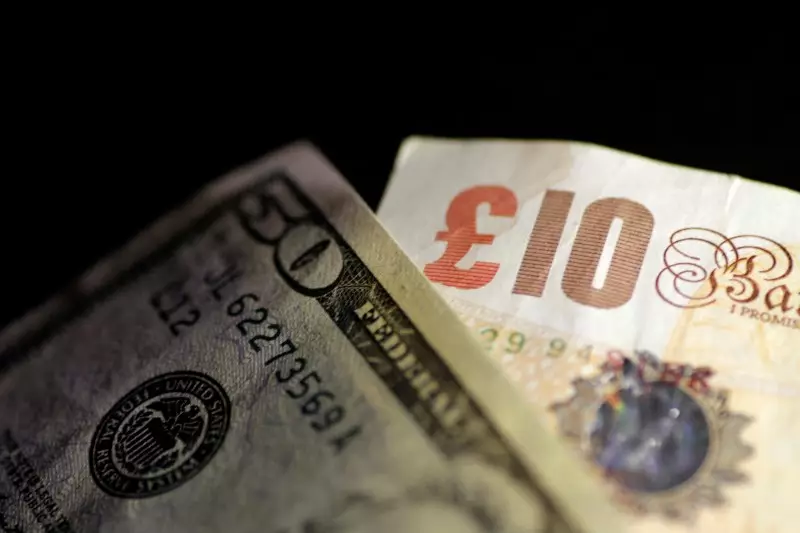In the realm of global finance, currency values are continually influenced by decisions made by central banks, which often dictate market expectations. Recently, the US dollar exhibited a slight decline yet managed to remain near the summit of its two-year highest value. This shift primarily reflects the Federal Reserve’s indication of a more measured approach toward interest rate cuts slated for 2025. Meanwhile, the pound sterling has demonstrated resilience against the backdrop of an upcoming monetary policy meeting by the Bank of England (BoE), highlighting the complexities of currency trading as influenced by central bank strategies.
As of 05:05 ET (10:05 GMT), the Dollar Index— a measure tracking the dollar’s performance against six major currencies— dipped by 0.1% to 107.670. However, this minor retreat follows a significant rise that brought it to levels unseen for over two years. The surge in the dollar came after the Federal Reserve not only implemented an anticipated interest rate cut but also revised its forecast for future cuts downward. Now projecting only a 50 basis point reduction for the year 2025, this contrasts with the previously hinted 100 basis points, signaling a shift towards a more hawkish monetary stance.
Analysts have been quick to interpret these developments, suggesting that the Fed’s recent communication strategy sets the stage for further dollar strength as the new year approaches. The anticipation of no additional rate cuts in January implies that the dollar could maintain its competitive edge against other currencies unless there are significant surprises in economic data. The consensus is that major economic indicators need to defy predictions considerably to erode the dollar’s newfound stability.
Attention now shifts to the upcoming release of third-quarter GDP growth figures, which are expected to reveal an annualized growth rate of 2.8%, a slight decline from the previous quarter’s 3.0%. This data will serve as a critical benchmark for investors, who are keenly evaluating the pace of economic recovery and its implications on future monetary policy.
The fluctuations of the pound sterling, on the other hand, illustrate a different narrative within Europe. As GBP/USD gained 0.7% to reach levels of 1.2662, the rise comes just ahead of the BoE’s policy-setting meeting. Speculation surrounding the central bank’s intentions remains poignant, especially as analysts opine that rates will likely remain steady amid pervasive inflation concerns. The forthcoming language adjustments and possible voting dynamics among members could offer crucial insights, even in the absence of a direct press conference to clarify decisions.
Across the Atlantic, the euro also found some footing as EUR/USD rose by 0.6% to 1.0415 following a more significant drop of 1.3% earlier. The European Central Bank (ECB) has actively pursued interest rate reductions, most recently lowering rates for the fourth occasion this year. With current inflation rates hovering around 2.3%, the ECB expects rates may continue to adjust further in 2025, particularly if inflation dynamics stabilize.
Christine Lagarde, the ECB president, reiterated the central bank’s commitment to gauging incoming data, suggesting a clear trajectory towards additional rate reductions if economic conditions permit. This reactive approach underscores the delicate balance the ECB must maintain as it navigates the intricate landscape of eurozone economies.
Turning to Asia, the Japanese yen faced notable pressure as USD/JPY surged by 1.5% to reach 157.13. This upward movement has brought the exchange rate past the 155 mark for the first time since late November, following the Bank of Japan’s decision to maintain current rates while signaling caution for the upcoming year. Disappointment emerged among traders who speculated on potential rate hikes in December, given the prior two increases earlier in the year which marked a significant departure from the bank’s long-standing ultra-loose monetary policy.
Similarly, the Chinese yuan experienced pressure with USD/CNY increasing by 0.3% to 7.3078. The yuan’s depreciation can be largely attributed to the anticipated expansion of monetary stimulus aimed at propelling economic growth in China.
The interplay between differing monetary policies by various central banks effectively shapes currency valuations globally. As political, economic, and financial landscapes evolve, market participants remain vigilant, calculated, and responsive to these influential shifts.


Leave a Reply